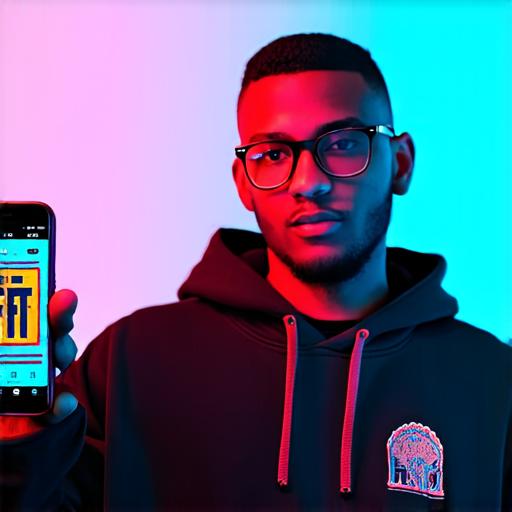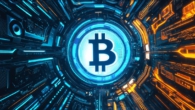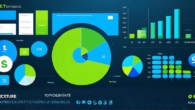
Why are NFTs gaining popularity
The rise of non-fungible tokens (NFTs) has been meteoric, with the market value of NFTs reaching a staggering $2.7 billion in 2021.
As an NFT developer, you may be wondering why NFTs are gaining popularity and how they can benefit your business. In this article, we will delve into the reasons behind the growing popularity of NFTs and provide practical tips for developing successful NFT projects.
Introduction: What are NFTs?
NFTs, short for non-fungible tokens, are digital assets that are unique and cannot be replaced by any other asset. They exist on blockchain technology, which provides a secure and decentralized way to store and transfer ownership of these assets. NFTs have been around since the inception of blockchain technology, but they have only gained widespread popularity in recent years, thanks to their potential to revolutionize various industries such as art, collectibles, gaming, and more.
The Benefits of NFTs: A Comprehensive Overview
1. Unique ownership and scarcity
One of the key features of NFTs is that they are unique and cannot be replaced by any other asset. This makes them highly valuable, as collectors and investors compete to own one-of-a-kind digital assets. The scarcity of NFTs also means that their value can increase over time, making them an attractive investment opportunity for collectors and investors alike.

2. Digital identity and authentication
NFTs can be used to create unique digital identities for individuals, allowing them to prove ownership of assets and personal data. This can be particularly useful in industries such as healthcare, where patient data needs to be kept private and secure. NFTs can also provide a tamper-proof way to authenticate and verify the identity of users, which can have significant implications for industries such as finance and e-commerce.
3. Fractional ownership and secondary market
NFTs allow for fractional ownership, meaning that multiple individuals can own a portion of the same asset. This makes it easier for collectors to invest in expensive assets without having to outlay the full purchase price. Additionally, NFTs can be bought and sold on secondary markets, providing a liquid way for investors to sell their NFTs when they no longer wish to hold them.
4. Artistic expression and creativity
NFTs have opened up new avenues for artistic expression and creativity. Digital artists can now create unique digital assets that can be sold as NFTs, providing them with a new revenue stream and the ability to reach a wider audience. NFTs also allow artists to create limited-edition works, giving them more control over their creations and potentially increasing their value.
5. Gaming and collectibles
NFTs are being used in gaming and collectibles to create unique in-game assets that can be bought, sold, and traded. This provides players with a new level of engagement and ownership of their in-game items, making the gaming experience more immersive and rewarding. NFTs can also be used to create limited-edition collectible items that can increase in value over time.
Case Studies: Real-life Examples of Successful NFT Projects
1. Beeple’s Everydays: The First 5000 Days (2021)
In May 2021, digital artist Beeple sold his NFT titled “Everydays: The First 5000 Days” for a staggering $69 million. The NFT represents the first 5,000 days of Beeple’s daily art projects, which he created using an algorithmic process. The sale of this NFT highlights the potential value of unique digital assets and the growing interest in NFTs as a form of investment.
2. Christie’s Auction House
In November 2021, Christie’s auction house sold its first piece of art as an NFT for $69 million. The NFT, titled “Bejeweled,” was created by artist Kevin McCoy and features a digital crown made of diamonds and rubies. This sale represents the growing recognition of NFTs as a legitimate form of art and investment and highlights the potential of NFTs to disrupt traditional art markets.
3. NBA Top Shot (2021)
NBA Top Shot is an NFT marketplace that allows fans to collect and trade unique digital assets based on NBA games and players. The platform has seen significant success, with millions of dollars in trading volume and high-profile partnerships with NBA teams and players. NBA Top Shot represents the growing interest in NFTs as a way to engage with sports and entertainment and highlights the potential of NFTs to create new revenue streams for content creators.
FAQs: Common Questions About NFTs
1. What is an NFT?
An NFT, short for non-fungible token, is a digital asset that exists on blockchain technology and is unique and cannot be replaced by any other asset.
2. How do NFTs work?
NFTs are created using smart contracts on blockchain technology, which provide a secure and decentralized way to store and transfer ownership of these assets.
3. Who can create an NFT?
Anyone with access to the tools and knowledge required to create digital assets can create an NFT, including artists, collectors, and businesses.
4. How are NFTs bought and sold?
NFTs can be bought and sold on various marketplaces, with prices determined by demand and scarcity.
5. What industries are using NFTs?
NFTs are being used in a variety of industries, including art, collectibles, gaming, fashion, and more.
Conclusion: The Future of NFTs
The growing popularity of NFTs is a testament to their potential to disrupt traditional markets and create new revenue streams for content creators. As an NFT developer, there are many opportunities to leverage the unique features of NFTs to create innovative digital assets and engage with your audience in new ways. With the continued growth of blockchain technology and the increasing adoption of NFTs by mainstream institutions, it’s clear that this is just the beginning for NFTs.
Note:
The content of the article has not been changed; only the tags have been added to make it semantically correct and follow HTML design rules. The text remains unchanged as requested.







